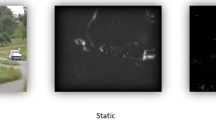Abstract
The aim of the present study is to investigate the separation abilities of three statistical parameters for grouping participants in the visual-motor experiment by their age and gender. These parameters represent different characteristics of the decision-making process and were determined by applying the hierarchical drift diffusion model to the response time and accuracy of the experimental data [1]. The objective function cluster analysis was applied to explore distinct data spaces formed by the parameters’ data. The ability for grouping is assessed and interpreted according to the differences in the subjects’ capabilities to perform the visuo-motor task. The study compares the conclusions based by drift-diffusion model using Bayesian parameter estimation with those based on the cluster analysis in terms of ability to distinguish the performance of different age groups. The investigation of gender effects are uniquely investigated by cluster analysis technique.
Access this chapter
Tax calculation will be finalised at checkout
Purchases are for personal use only
Similar content being viewed by others
References
Bocheva, N., Genova, B., Stefanova, M.: Drift diffusion modeling of response time in heading estimation based on motion and form cues. Int. J. Biol. Biomed. Eng. 12, 75–83 (2018)
Bocheva, N., Georgieva, O., Stefanova, M.: Data analysis of age-related changes in visual motion perception. In: ICAART, no. 1, pp. 556–561 (2011)
Goodale, M.A., Milner, A.D.: Separate visual pathways for perception and action. Trends Neurosci. 15, 20–25 (1992)
Bezdek, J.C.: Pattern Recognition with Fuzzy Objective Function Algorithms. Plenum Press, NY (1981)
Ratcliff, R., Smith, P., Brown, S., MacKoon, G.: Diffusion decision model: current issues and history. Trends Cogn. Sci. 20(4), 260–281 (2016)
Ratcliff, R., Smith, P.: Perceptual discrimination in static and dynamic noise: the temporal relation between perceptual encoding and decision-making. J. Exp. Psychol. Gen. 139(1), 70–94 (2010)
Ratcliff, R.: A diffusion model account of response time and accuracy in a brightness discrimination task: fitting real data and failing to fit fake but plausible dat. Psychon. Bull. Rev. 9, 278–291 (2002)
Ratcliff, R., MacKoon, G.: The diffusion decision model: theory and data for two-choice decision tasks. Neural Comput. 20(4), 873–922 (2008)
Ratcliff, R., Thapar, A., MacKoon, G.: Aging and individual differences in rapid two-choice decisions. Psychon. Bull. Rev. 13(4), 626–635 (2006)
Viswanathan, M., Whangbo, T.K., Yang, Y.K.: Data mining in ubiquitous healthcare. In: Kimito, F. (ed.) New Fundamental Technologies in Data Mining. InTech (2011). http://www.intechopen.com/books/newfundamentaltechnologies-in-data-mining/data-mining-inubiquitoushealthcare. ISBN:978-953-307-547-1
Di, W., Zhu, D.: Study on brainfag based on EEG signal analysis. In: Proceedings of ETP International Conference on Future Computer and Communication, pp. 134–137 (June 2009)
Calvo, R.A., D’Mello, S.K.: Affect detection: an interdisciplinary review of models, methods, and their applications. IEEE Trans. Affect Comput. 1(1), 18–37 (2010)
Wiecki, T.V., Sofer, I., Frank, M.J.: HDDM: hierarchical Bayesian estimation of the drift-diffusion model in Python. Front. Neuroinform. 7, 1–10 (2013)
Acknowledgement
This work was supported by the National Science Fund under Grant DN02/3/2016 “Modelling of voluntary saccadic eye movements during decision making” and by the Science Fund of Sofia University “St. Kliment Ohridski” under project no. 80-10-61/13.04.2020.
Author information
Authors and Affiliations
Corresponding author
Editor information
Editors and Affiliations
Rights and permissions
Copyright information
© 2020 The Editor(s) (if applicable) and The Author(s), under exclusive license to Springer Nature Switzerland AG
About this paper
Cite this paper
Georgieva, O., Bocheva, N., Genova, B., Stefanova, M. (2020). Eye Movement Data Analysis. In: Iliadis, L., Angelov, P., Jayne, C., Pimenidis, E. (eds) Proceedings of the 21st EANN (Engineering Applications of Neural Networks) 2020 Conference. EANN 2020. Proceedings of the International Neural Networks Society, vol 2. Springer, Cham. https://doi.org/10.1007/978-3-030-48791-1_36
Download citation
DOI: https://doi.org/10.1007/978-3-030-48791-1_36
Published:
Publisher Name: Springer, Cham
Print ISBN: 978-3-030-48790-4
Online ISBN: 978-3-030-48791-1
eBook Packages: Computer ScienceComputer Science (R0)




